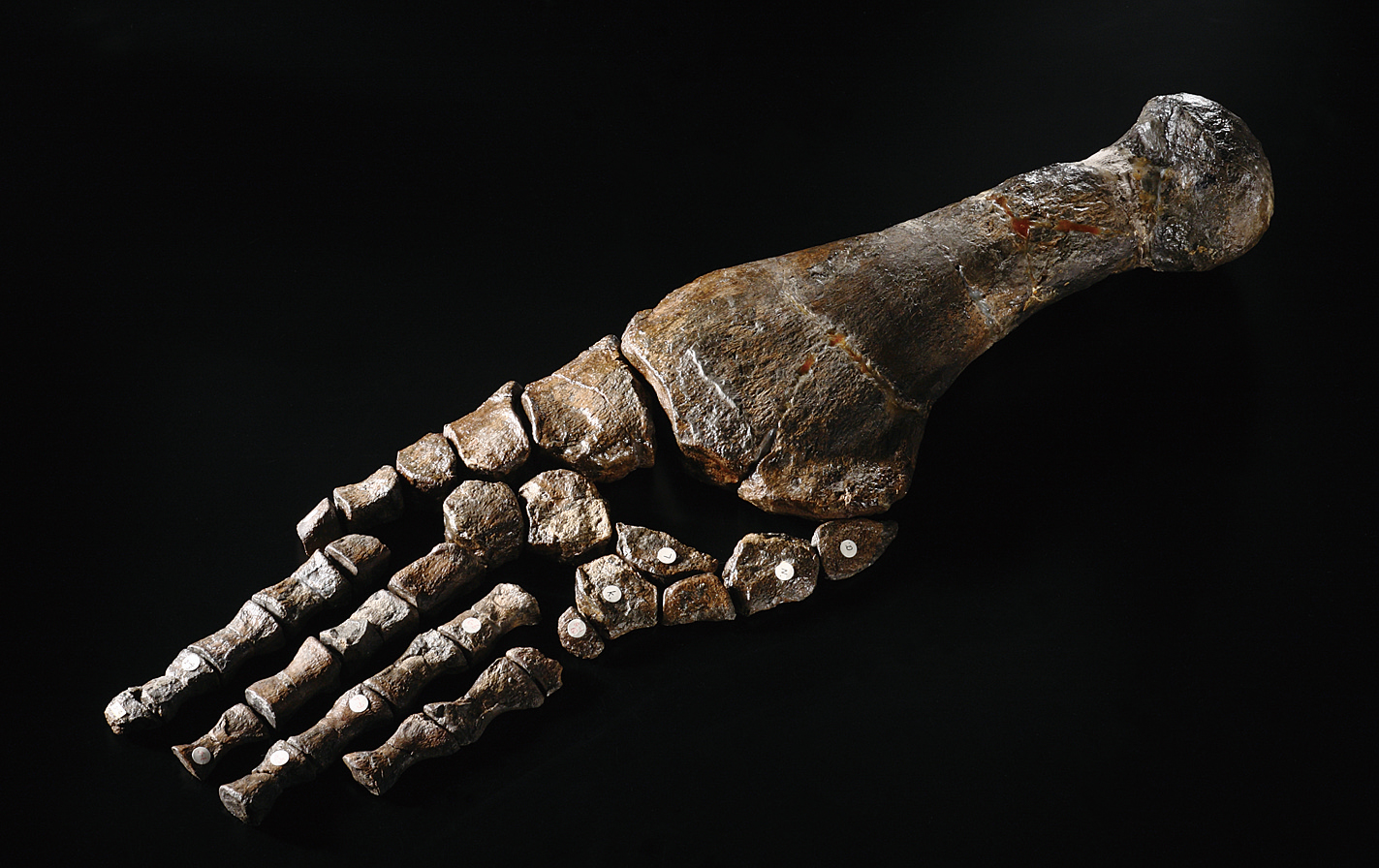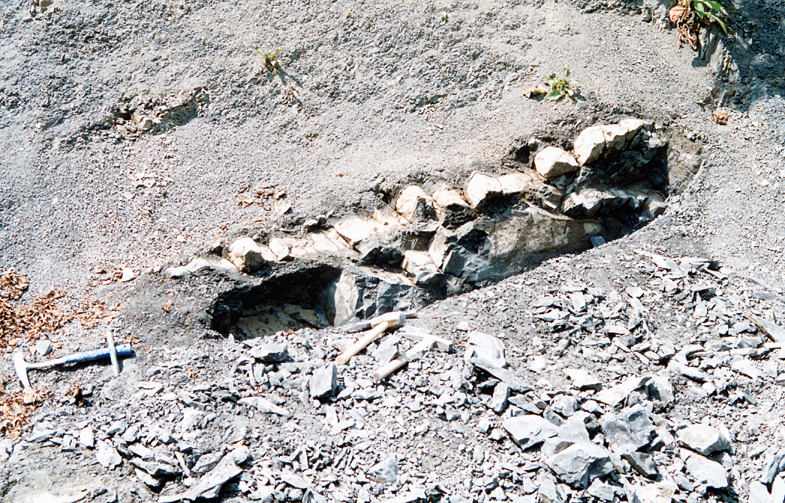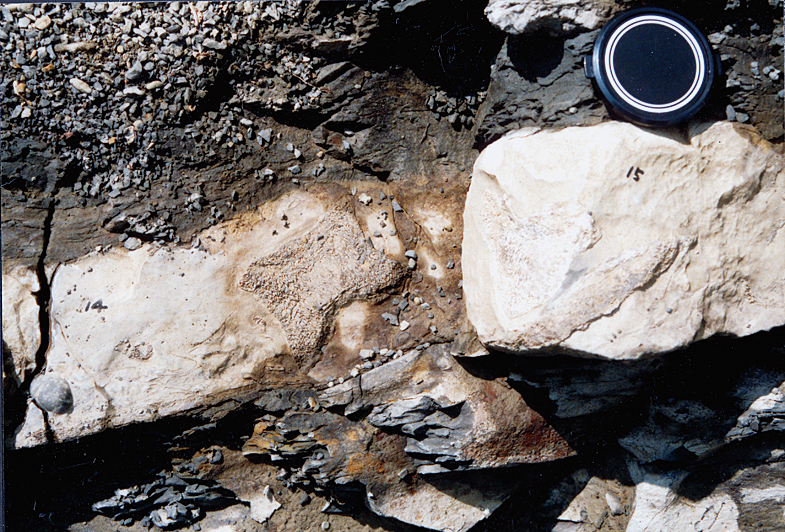B17
The right forelimb of polycotylid plesiosaur
diversity of Japanese marine reptiles
During the Mesozoic, various reptiles, such as ichthyosaurs, plesiosaurus, mosasaurus, sea turtle and crocodilians, secondarily adapted to the sea and acted as predators in oceanic food web. Plesiosaurs prospered from the Late Triassic till end of the Cretaceous, some species of plesionsaurs possessed the neck that is consist of more than 70 cervicals and longer than the half of its body length. Polycotylid plesiosaurs had relatively short neck and lived during the Cretaceous. This polycotylid specimen was found from the Late Cretaceous Middle Yezo Group of Obira town, Hokkaido. Vertebra, ribs, right half of pectoral girdle, fragmentary pelvic girdle and gut contents that belong to the same individual co-occurred with this right forelimb. This specimen was diagnosed as polycotylid, because cervicals have articular facets for single headed rib and cervicals lack the lateral ridge, which is common for elasmosaurid plesiosaurs. This specimen was first polycotylid from East Asia, when it was reported in 2000. Subsequently, several polycotylid specimens were found from Japan. Various marine reptiles were found from Japan. These are: one of the oldest ichtyosaurus, Utatsusaurus, Mesodermochelys that is endemic to the Late Cretaceous of Japan and closely related to leathaerback turtle, Mosasaurid Taniwhasaurus mikasanesis that has close relatives found from Antarctica and New Zealand, Mosasaurid Phosphorosaurus ponpetelegans, which three dimensionally preserved skull indicates its binocular vision, and Futabasaurus, the oldest elsamosaurid plesiosaur from northern Pacific. Because age of Mesozoic marine sediments of Japan were intensively studied and also because Japan is the only country in East Asia that yield various marine reptiles, studying Japanese marine reptiles can contribute to understand biogeograpny and living ranges of marine reptiles. (Tai Kubo)
References
Sato, T. & Storrs, G. W. (2000) An early polycotylid plesiosaur (Reptilia: Sauropterygia) from the Cretaceous of Hokkaido, Japan. Journal of Paleontology 74: 907–914.
Sato, T. et al. (2012) A review of the Upper Cretaceous marine reptiles from Japan. Cretaceous Research 37: 319–340.



